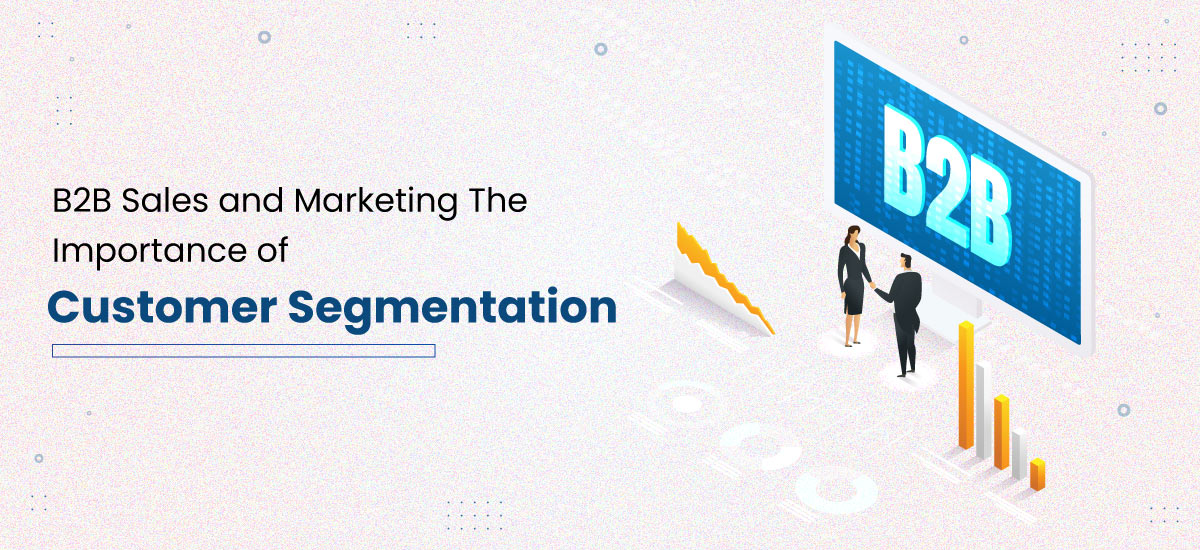Table of Contents
In today’s highly competitive B2B marketplace, it’s more important than ever to have a well-defined target audience and marketing strategy. One of the most effective ways to achieve this is through customer segmentation.
From identifying your ideal customer to customizing your marketing messages and improving customer engagement, customer segmentation can help you optimize your sales and marketing efforts and achieve better results.
With practical tips and real-world examples, this post will show you how to get started with customer segmentation and take your B2B sales and marketing to the next level.
Don’t miss out on this valuable resource – read on now!
What is Customer Segmentation?
Customer segmentation is the process of dividing a company’s customer base into smaller groups based on shared characteristics, such as demographics, behaviors, or preferences. By grouping customers with similar traits together, businesses can create targeted marketing campaigns and personalized experiences that are more effective at driving engagement and increasing sales.
Customer segmentation can also help companies identify new market opportunities and tailor their products and services to better meet the needs of specific customer groups. Overall, customer segmentation is a powerful tool for optimizing a company’s sales and marketing strategy and improving customer satisfaction.
Reasons to Segment Customers
- Better Targeting: By segmenting your customers, you can identify your most profitable customer groups and tailor your marketing efforts to their specific needs, preferences, and behaviors. This leads to more effective targeting, which can help you achieve better results and increase sales.
- Personalized Experience: Customers today expect personalized experiences from the brands they interact with. By segmenting your customers, you can create targeted messaging and experiences that resonate with each group and make them feel valued and understood.
- Improved Engagement: When you understand your customers’ unique needs and interests, you can create more engaging and relevant content that keeps them interested and invested in your brand. This can lead to higher levels of engagement, such as increased website traffic, social media interaction, and email open rates.
- Higher Customer Satisfaction: When customers feel that a brand truly understands and cares about their needs, they are more likely to be satisfied with their experience and become loyal customers. By segmenting your customers and creating personalized experiences, you can improve customer satisfaction and retention rates.
- Competitive Advantage: By implementing customer segmentation, you can gain a competitive advantage over other brands that do not personalize their marketing efforts or understand their customers’ needs as well. This can lead to increased market share, revenue, and brand loyalty.
What are the Types of B2B Customer Segmentation?
There are several types of B2B customer segmentation, including:
- Demographic Segmentation: This involves dividing customers based on demographic characteristics such as age, gender, location, company size, and industry.
- Firmographic Segmentation: This involves dividing customers based on characteristics related to their organization, such as industry type, company size, revenue, number of employees, and geographic location.
- Behavioral Segmentation: This involves dividing customers based on their behavior, such as purchasing patterns, engagement with your brand, and level of loyalty.
- Psychographic Segmentation: This involves dividing customers based on their personality, values, beliefs, and attitudes. This can help you identify customer groups that are more likely to resonate with certain types of messaging or products.
- Technographic Segmentation: This involves dividing customers based on the technology they use, such as software systems, devices, or tools. This can help you tailor your marketing messages and product offerings to customers who have specific technology needs or preferences.
Each type of segmentation can provide valuable insights into your customers and help you create targeted marketing campaigns that resonate with their specific needs and preferences. By combining multiple types of segmentation, you can gain a more comprehensive understanding of your customers and create highly effective B2B marketing strategies.
Customer Segmentation and your YoroCRM
Customer segmentation is a powerful tool that can help you optimize your marketing strategy and increase revenue. With YoroCRM, you can easily segment your customers based on a variety of criteria, including demographics, firmographics, behavior, and more.
By segmenting your customers in YoroCRM, you can create targeted sales campaigns and personalized messaging that resonates with each group. For example, you can send personalized emails to customers who have recently made a purchase or create targeted ads for customers who have shown interest in a particular product or service.
With YoroCRM’s customizable dashboards, you can also track key metrics such as customer engagement, conversion rates, and revenue by customer segment. This can help you identify trends and make data-driven decisions about how to optimize your sales strategy for each group.
Overall, customer segmentation is an essential component of any successful sales strategy, and YoroCRM makes it easy to implement and track. Whether you’re a small business or a large enterprise, YoroCRM can help you improve customer engagement, increase sales, and grow your business.




